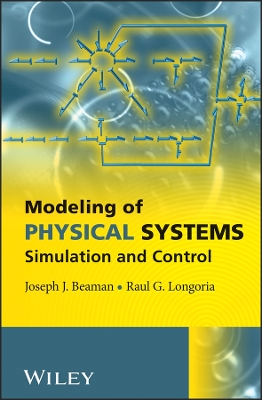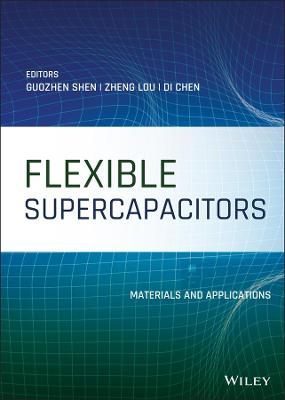Fuel Cells, Solar Panels, and Storage Devices
 -15%
portes grátis
-15%
portes grátis
Fuel Cells, Solar Panels, and Storage Devices
Materials and Methods
Fink, Johannes Karl
John Wiley & Sons Inc
12/2017
312
Dura
Inglês
9781119480105
15 a 20 dias
586
1 Fuel Cells 1
1.1 Conventional Fuel Cells 2
1.1.1 Sealing Material for Solid Polymer Fuel Cell Separator 2
1.1.2 Water Management in a Polymer Electrolyte Fuel Cell 2
1.1.3 Alkaline Fuel Cells 7
1.1.4 Alkaline Direct Alcohol Fuel Cells 8
1.1.5 Vanadium Redox Flow Battery 8
1.1.6 Miniaturization of a Polymer-Type Fuel Cell 9
1.1.7 Polymer Fuel Cell Structure 13
1.1.8 Fuel Cell System and Method for Humidifying 15
1.2 Direct Methanol Fuel Cells 15
1.2.1 Modeling Liquid Feed Direct Methanol Fuel Cells 17
1.2.2 Vapor Feed Direct Methanol Fuel Cells 18
1.2.3 Mixed Feed Direct Methanol Fuel Cells 19
1.2.4 Metalized Polymer Film 19
1.2.5 Catalysts 20
1.2.6 Electrolytes 29
1.3 Direct Ethanol Fuel Cells 29
1.3.1 Transport Phenomena in Alkaline Direct Ethanol Fuel Cells 31
1.3.2 Nanoporous Palladium Anode 33
1.3.3 Catalysts for Ethanol Fuel Cells 33
1.4 Direct Formate Fuel Cells 37
1.5 Direct Urea Fuel Cells 40
1.6 Solid Oxide Fuel Cell Systems 42
1.6.1 Perovskite Oxides 44
1.6.2 Yttria-Stabilized Zirconia 45
1.6.3 Anodized Aluminum Oxide 46
1.6.4 Copper-Modified Ceria Zirconia 46
1.6.5 Nanostructured Bilayer Solid Oxide Fuel Cell 47
1.6.6 Organic Waste Power Plant 47
1.6.7 Oriented Nanostructures 48
1.6.8 Silicon-Based Nanothin Film Solid Oxide Fuel Cell 48
1.6.9 Nanoparticles-Loaded Cathode 49
1.6.10 Direct Oxidation of Hydrocarbons in a Solid Oxide Fuel Cell 49
1.7 Biological Fuel Cells 50
1.7.1 Miniature Biological Fuel Cell 51
1.7.2 Cellulose Pellicles 56
1.7.3 Nanoporous Filters 56
1.7.4 Paper-Based Fuel Cell 57
1.7.5 Fuel Cell Utilizing Mitochondria 57
1.7.6 Grafting of Biomolecules onto Microbial Fuel Cells 58
1.7.7 Biosupercapacitor 59
1.7.8 Biological Clean Fuel Processing Systems 60
1.7.9 Filtration-Active Fuel Cell 61
1.7.10 Sustainable Wastewater Treatment 62
1.7.11 Hybrid Biological Fuel Cell 65
1.7.12 High Durability Fuel Cell Components with Cerium Salt Additives 67
1.7.13 Reserve Power Source 68
1.7.14 Performance of a Yeast-Mediated Biological Fuel Cell 68
1.7.15 One-Compartment Fructose/Air Biological Fuel Cell 69
References 69
2 Polymer Electrodes 79
2.1 Porous Electrode Substrate 79
2.2 Electrode Assembly for Solid Polymer Fuel Cell 83
2.3 Electrode for Fuel Cell 83
2.4 Flow-Field Plate 84
2.5 Catalyst for Fuel Electrode 85
2.6 Electrode Catalyst and Solid Polymer Fuel Cell 85
2.7 Membrane Electrode Assembly 87
References 88
3 Polymer Membranes 91
3.1 History 91
3.2 Desired Properties of Membranes 92
3.2.1 Permeation and Diffusion 93
3.2.2 Water Transport in Polymer Electrolyte Membrane Fuel Cells 93
3.2.3 Water Management System for Solid Polymer Electrolyte Fuel Cell Power Plants 95
3.2.4 Accelerated Conditioning 95
3.2.5 Working Principle of a Polymer Exchange Membrane 96
3.2.6 Membranes for Direct Methanol Fuel Cells 96
3.2.7 Membranes for Direct Ethanol Fuel Cells 109
3.2.8 High-Temperature Polymer Electrolyte Membrane Fuel Cell 111
3.2.9 Functionalized Microporous Zeolite- 13X Membrane 112
3.2.10 Nanoporous Carbon-Nafion Hybrid Membranes 112
3.2.11 Proton Exchange Membranes 113
3.2.12 Catalyst Degradation and Starvation 113
3.2.13 Durability Test Protocols 114
3.2.14 Nanoscale Properties 115
3.3 Types of Membrane Materials 116
3.3.1 Biological Fuel Cells with Nanoporous Membranes 116
3.3.2 Proton-Selective Membrane for Solid Polymer Fuel Cells 119
3.3.3 Polymer Electrolyte Membranes for Direct Methanol Fuel Cells 122
3.3.4 Nafion 124
3.3.5 Fuel Cell Polymer Electrolyte Membrane Containing Manganese Oxide 126
3.3.6 High-Temperature Polymer Electrolyte Membrane Fuel Cells 126
3.3.7 Fluorinated High-Performance Polymers 127
3.3.8 Fluor-Containing Copolymers for Polymer Membranes 128
3.3.9 Solid Electrolyte Membrane 129
3.3.10 Triazine Polymer for Fuel Cell Membrane 133
3.3.11 Polymer-Nanocomposite Electrolyte Membranes 134
3.4 Fabrication 135
3.4.1 Low-Pressure Plasmas 135
3.4.2 Electrospinning 135
3.5 Degradation 136
3.5.1 Mechanical Degradation 136
3.5.2 Thermal Degradation 136
3.5.3 Chemical Degradation 137
References 138
4 Solar Cells 145
4.1 History 146
4.2 Types of Solar Cells 147
4.2.1 Inorganic-Organic Hybrid Perovskite Solar Cells 147
4.2.2 Solar Powered Biological Fuel Cell 150
4.2.3 Conjugated Polymer-Based Organic Solar Cells 152
4.2.4 Heterojunction Polymer Solar Cell 156
4.2.5 Hybrid Bulk Heterojunction Type Solar Cells 157
4.2.6 Triple-Junction Polymer Solar Cell 157
4.2.7 Amorphous Silicon Multijunction Solar Cells 158
4.2.8 Multijunction Polymer Solar Cells 158
4.2.9 Wide Bandgap Photovoltaic Polymers 158
4.2.10 Low Bandgap Polymer 159
4.2.11 Fluorinated Benzothiadiazole 161
4.2.12 Indene C60 Bisadduct 161
4.2.13 Spiro Derivatives 162
4.2.14 Pyrene Derivatives 163
4.2.15 Interfacial Materials for Organic Solar Cells 163
4.2.16 Improvement of Polymer Solar Cell Stability 165
4.3 Solar Cell Efficiency 166
4.4 Fabrication Methods 166
4.4.1 Slot-Die Coating 170
4.4.2 Full Roll-to-Roll Processing 171
4.5 Silver Nanoplates and Core-Shell Nanoparticles 174
4.6 Vanadium Oxide Hydrate as Hole-Transport Layer 176
4.7 Graphene Quantum Dot-Modified Electrodes 178
4.8 Enhancing Thermal Stability by Electron Beam Irradiation 178
4.9 Inverted Polymer Solar Cell 179
4.10 Single-Junction Polymer Solar Cells 180
4.11 Medium-Bandgap Polymer Donor 181
4.12 Flexible Polymer Solar Cells 182
4.13 PCPDTBT 183
4.13.1 Direct Attachment and Growth of Gold or Silver Nanop articles 185
4.13.2 Photooxidation Behavior 186
4.13.3 PCPDTBT:PC70BM Solar Cells 186
4.13.4 Ternary Blend of PCDTBT, PCPDTBT, and PC70BM 187
4.13.5 PCPDTBT:PC71BM Devices with Gold Nanoparticles 188
4.13.6 P3HT and ICBA blends in C-PCPDTBT and Si-PCPDTBT 189
4.13.7 Influence of Environment Temperature 189
4.14 Extended Storage Life 190
4.15 Dye-Sensitized Solar Cells 191
4.15.1 Poly(ethylene oxide) Matrix 191
4.15.2 Poly(methyl methacrylate) Matrix 192
4.15.3 Poly(propylene carbonate) Matrix 193
4.15.4 Sulfobetaine-Based Polymer 194
4.15.5 Titanium Dioxide-Based Cells 194
4.15.6 Quasi-Solid-State Gel Electrolytes 195
4.15.7 Bio-based Electrolytes 196
4.16 Direct Arylation Polymerization 198
4.17 Polymer-Fullerene Solar Cells 200
4.18 Functionalized Poly(thiophene) 201
4.19 Fullerene 202
4.20 Transparent Window Materials 204
4.21 Solar Cell Encapsulants 204
4.22 Anti-reflection Coating 205
4.23 Fullerene-Free Polymer Solar Cells 207
4.23.1 PBDB-T Fullerene-Free Solar Cells 208
4.23.2 P3HT-Based Fullerene-Free Solar Cells 208
4.23.3 Poly(thiophene)-Based Fullerene-Free Solar Cells 210
4.23.4 Trialkylsilyl Substituted 2D-Conjugated Polymer 211
4.23.5 Electron Acceptor Dimer 213
4.23.6 Wide Bandgap Polymer Donor 215
4.23.7 Spirobifluorene- and Diketopyrrolopyrrole-Based Nonfullerene Acceptor 216
4.23.8 Selenophene-Containing Fused-Ring Acceptor 217
4.23.9 Rhodanine Flanked Nonfullerene Acceptor 219
4.23.10 Indacenodithiopheno-indacenodithiophene 220
4.23.11 DTBTF with Thiobarbituric Acid 221
4.23.12 2-Vinyl-4,5-dicyanoimidazole 221
4.23.13 Thiophene-Based Polymers 222
References 227
5 Rechargeable Batteries 239
5.1 Aluminium Batteries 239
5.2 Zinc Batteries 241
5.2.1 Zinc-Poly(aniline) Batteries 241
5.2.2 Zinc Deposition and Stripping 242
5.2.3 Zinc-Air Batteries 243
5.3 Sodium Batteries 245
5.3.1 Organosodium Polymer Batteries 245
5.3.2 Sodium Nickel Batteries 247
5.4 Magnesium Batteries 248
5.4.1 Coordination Polymer Cathode 248
5.4.2 Nanocomposite Polymer Electrolyte 248
5.4.3 Solid Polymer Electrolytes 249
5.4.4 Anthraquinone-Based Polymer as Cathode 250
5.5 Lithium Batteries 251
5.5.1 Polymeric Binders 251
5.5.2 Nano Bioceramic Filler 253
5.5.3 Polymer Binder-Free Anode 254
5.5.4 Overcharge Protection 255
5.5.5 Electrode Protection 256
5.5.6 Calix[4]quinone 257
5.5.7 Copolymer of Methyl methacrylate and Ethylene oxide Electrolyte 257
5.5.8 Poly(vinylene carbonate) Electrolyte 258
5.5.9 Graphene/Carbon Nanotube Foam Conjugated Polymers 259
5.5.10 Fibrous Nanocomposite Polymer Electrolyte 259
5.5.11 Nanocomposite Fluoro Polymer Electrolyte 260
5.5.12 Solid Polymer Electrolytes for Lithium Battery Applications 261
5.5.13 Porous Polymer Electrolytes 264
5.5.14 Poly(anthraquinonyl sulfide) Cathode Material 265
5.5.15 Poly(aniline) Cathode Material 268
5.5.16 Polymer Gel Electrolytes 268
5.5.17 Lithium-Oxygen Batteries 272
5.5.18 Lithium-Sulfur Batteries 272
5.5.19 Lithium-Ion Poly(sulfide) Batteries 275
5.5.20 Lithium-Carbon Dioxide Batteries 276
5.5.21 Lithium Titanate Spinel 276
5.5.22 Selenized Poly(acrylonitrile) Electrodes 277
5.5.23 Flexible Rechargeable Thin-Film Batteries 277
References 278
Index 267
Acronyms 283
Chemicals 285
General Index 290
1 Fuel Cells 1
1.1 Conventional Fuel Cells 2
1.1.1 Sealing Material for Solid Polymer Fuel Cell Separator 2
1.1.2 Water Management in a Polymer Electrolyte Fuel Cell 2
1.1.3 Alkaline Fuel Cells 7
1.1.4 Alkaline Direct Alcohol Fuel Cells 8
1.1.5 Vanadium Redox Flow Battery 8
1.1.6 Miniaturization of a Polymer-Type Fuel Cell 9
1.1.7 Polymer Fuel Cell Structure 13
1.1.8 Fuel Cell System and Method for Humidifying 15
1.2 Direct Methanol Fuel Cells 15
1.2.1 Modeling Liquid Feed Direct Methanol Fuel Cells 17
1.2.2 Vapor Feed Direct Methanol Fuel Cells 18
1.2.3 Mixed Feed Direct Methanol Fuel Cells 19
1.2.4 Metalized Polymer Film 19
1.2.5 Catalysts 20
1.2.6 Electrolytes 29
1.3 Direct Ethanol Fuel Cells 29
1.3.1 Transport Phenomena in Alkaline Direct Ethanol Fuel Cells 31
1.3.2 Nanoporous Palladium Anode 33
1.3.3 Catalysts for Ethanol Fuel Cells 33
1.4 Direct Formate Fuel Cells 37
1.5 Direct Urea Fuel Cells 40
1.6 Solid Oxide Fuel Cell Systems 42
1.6.1 Perovskite Oxides 44
1.6.2 Yttria-Stabilized Zirconia 45
1.6.3 Anodized Aluminum Oxide 46
1.6.4 Copper-Modified Ceria Zirconia 46
1.6.5 Nanostructured Bilayer Solid Oxide Fuel Cell 47
1.6.6 Organic Waste Power Plant 47
1.6.7 Oriented Nanostructures 48
1.6.8 Silicon-Based Nanothin Film Solid Oxide Fuel Cell 48
1.6.9 Nanoparticles-Loaded Cathode 49
1.6.10 Direct Oxidation of Hydrocarbons in a Solid Oxide Fuel Cell 49
1.7 Biological Fuel Cells 50
1.7.1 Miniature Biological Fuel Cell 51
1.7.2 Cellulose Pellicles 56
1.7.3 Nanoporous Filters 56
1.7.4 Paper-Based Fuel Cell 57
1.7.5 Fuel Cell Utilizing Mitochondria 57
1.7.6 Grafting of Biomolecules onto Microbial Fuel Cells 58
1.7.7 Biosupercapacitor 59
1.7.8 Biological Clean Fuel Processing Systems 60
1.7.9 Filtration-Active Fuel Cell 61
1.7.10 Sustainable Wastewater Treatment 62
1.7.11 Hybrid Biological Fuel Cell 65
1.7.12 High Durability Fuel Cell Components with Cerium Salt Additives 67
1.7.13 Reserve Power Source 68
1.7.14 Performance of a Yeast-Mediated Biological Fuel Cell 68
1.7.15 One-Compartment Fructose/Air Biological Fuel Cell 69
References 69
2 Polymer Electrodes 79
2.1 Porous Electrode Substrate 79
2.2 Electrode Assembly for Solid Polymer Fuel Cell 83
2.3 Electrode for Fuel Cell 83
2.4 Flow-Field Plate 84
2.5 Catalyst for Fuel Electrode 85
2.6 Electrode Catalyst and Solid Polymer Fuel Cell 85
2.7 Membrane Electrode Assembly 87
References 88
3 Polymer Membranes 91
3.1 History 91
3.2 Desired Properties of Membranes 92
3.2.1 Permeation and Diffusion 93
3.2.2 Water Transport in Polymer Electrolyte Membrane Fuel Cells 93
3.2.3 Water Management System for Solid Polymer Electrolyte Fuel Cell Power Plants 95
3.2.4 Accelerated Conditioning 95
3.2.5 Working Principle of a Polymer Exchange Membrane 96
3.2.6 Membranes for Direct Methanol Fuel Cells 96
3.2.7 Membranes for Direct Ethanol Fuel Cells 109
3.2.8 High-Temperature Polymer Electrolyte Membrane Fuel Cell 111
3.2.9 Functionalized Microporous Zeolite- 13X Membrane 112
3.2.10 Nanoporous Carbon-Nafion Hybrid Membranes 112
3.2.11 Proton Exchange Membranes 113
3.2.12 Catalyst Degradation and Starvation 113
3.2.13 Durability Test Protocols 114
3.2.14 Nanoscale Properties 115
3.3 Types of Membrane Materials 116
3.3.1 Biological Fuel Cells with Nanoporous Membranes 116
3.3.2 Proton-Selective Membrane for Solid Polymer Fuel Cells 119
3.3.3 Polymer Electrolyte Membranes for Direct Methanol Fuel Cells 122
3.3.4 Nafion 124
3.3.5 Fuel Cell Polymer Electrolyte Membrane Containing Manganese Oxide 126
3.3.6 High-Temperature Polymer Electrolyte Membrane Fuel Cells 126
3.3.7 Fluorinated High-Performance Polymers 127
3.3.8 Fluor-Containing Copolymers for Polymer Membranes 128
3.3.9 Solid Electrolyte Membrane 129
3.3.10 Triazine Polymer for Fuel Cell Membrane 133
3.3.11 Polymer-Nanocomposite Electrolyte Membranes 134
3.4 Fabrication 135
3.4.1 Low-Pressure Plasmas 135
3.4.2 Electrospinning 135
3.5 Degradation 136
3.5.1 Mechanical Degradation 136
3.5.2 Thermal Degradation 136
3.5.3 Chemical Degradation 137
References 138
4 Solar Cells 145
4.1 History 146
4.2 Types of Solar Cells 147
4.2.1 Inorganic-Organic Hybrid Perovskite Solar Cells 147
4.2.2 Solar Powered Biological Fuel Cell 150
4.2.3 Conjugated Polymer-Based Organic Solar Cells 152
4.2.4 Heterojunction Polymer Solar Cell 156
4.2.5 Hybrid Bulk Heterojunction Type Solar Cells 157
4.2.6 Triple-Junction Polymer Solar Cell 157
4.2.7 Amorphous Silicon Multijunction Solar Cells 158
4.2.8 Multijunction Polymer Solar Cells 158
4.2.9 Wide Bandgap Photovoltaic Polymers 158
4.2.10 Low Bandgap Polymer 159
4.2.11 Fluorinated Benzothiadiazole 161
4.2.12 Indene C60 Bisadduct 161
4.2.13 Spiro Derivatives 162
4.2.14 Pyrene Derivatives 163
4.2.15 Interfacial Materials for Organic Solar Cells 163
4.2.16 Improvement of Polymer Solar Cell Stability 165
4.3 Solar Cell Efficiency 166
4.4 Fabrication Methods 166
4.4.1 Slot-Die Coating 170
4.4.2 Full Roll-to-Roll Processing 171
4.5 Silver Nanoplates and Core-Shell Nanoparticles 174
4.6 Vanadium Oxide Hydrate as Hole-Transport Layer 176
4.7 Graphene Quantum Dot-Modified Electrodes 178
4.8 Enhancing Thermal Stability by Electron Beam Irradiation 178
4.9 Inverted Polymer Solar Cell 179
4.10 Single-Junction Polymer Solar Cells 180
4.11 Medium-Bandgap Polymer Donor 181
4.12 Flexible Polymer Solar Cells 182
4.13 PCPDTBT 183
4.13.1 Direct Attachment and Growth of Gold or Silver Nanop articles 185
4.13.2 Photooxidation Behavior 186
4.13.3 PCPDTBT:PC70BM Solar Cells 186
4.13.4 Ternary Blend of PCDTBT, PCPDTBT, and PC70BM 187
4.13.5 PCPDTBT:PC71BM Devices with Gold Nanoparticles 188
4.13.6 P3HT and ICBA blends in C-PCPDTBT and Si-PCPDTBT 189
4.13.7 Influence of Environment Temperature 189
4.14 Extended Storage Life 190
4.15 Dye-Sensitized Solar Cells 191
4.15.1 Poly(ethylene oxide) Matrix 191
4.15.2 Poly(methyl methacrylate) Matrix 192
4.15.3 Poly(propylene carbonate) Matrix 193
4.15.4 Sulfobetaine-Based Polymer 194
4.15.5 Titanium Dioxide-Based Cells 194
4.15.6 Quasi-Solid-State Gel Electrolytes 195
4.15.7 Bio-based Electrolytes 196
4.16 Direct Arylation Polymerization 198
4.17 Polymer-Fullerene Solar Cells 200
4.18 Functionalized Poly(thiophene) 201
4.19 Fullerene 202
4.20 Transparent Window Materials 204
4.21 Solar Cell Encapsulants 204
4.22 Anti-reflection Coating 205
4.23 Fullerene-Free Polymer Solar Cells 207
4.23.1 PBDB-T Fullerene-Free Solar Cells 208
4.23.2 P3HT-Based Fullerene-Free Solar Cells 208
4.23.3 Poly(thiophene)-Based Fullerene-Free Solar Cells 210
4.23.4 Trialkylsilyl Substituted 2D-Conjugated Polymer 211
4.23.5 Electron Acceptor Dimer 213
4.23.6 Wide Bandgap Polymer Donor 215
4.23.7 Spirobifluorene- and Diketopyrrolopyrrole-Based Nonfullerene Acceptor 216
4.23.8 Selenophene-Containing Fused-Ring Acceptor 217
4.23.9 Rhodanine Flanked Nonfullerene Acceptor 219
4.23.10 Indacenodithiopheno-indacenodithiophene 220
4.23.11 DTBTF with Thiobarbituric Acid 221
4.23.12 2-Vinyl-4,5-dicyanoimidazole 221
4.23.13 Thiophene-Based Polymers 222
References 227
5 Rechargeable Batteries 239
5.1 Aluminium Batteries 239
5.2 Zinc Batteries 241
5.2.1 Zinc-Poly(aniline) Batteries 241
5.2.2 Zinc Deposition and Stripping 242
5.2.3 Zinc-Air Batteries 243
5.3 Sodium Batteries 245
5.3.1 Organosodium Polymer Batteries 245
5.3.2 Sodium Nickel Batteries 247
5.4 Magnesium Batteries 248
5.4.1 Coordination Polymer Cathode 248
5.4.2 Nanocomposite Polymer Electrolyte 248
5.4.3 Solid Polymer Electrolytes 249
5.4.4 Anthraquinone-Based Polymer as Cathode 250
5.5 Lithium Batteries 251
5.5.1 Polymeric Binders 251
5.5.2 Nano Bioceramic Filler 253
5.5.3 Polymer Binder-Free Anode 254
5.5.4 Overcharge Protection 255
5.5.5 Electrode Protection 256
5.5.6 Calix[4]quinone 257
5.5.7 Copolymer of Methyl methacrylate and Ethylene oxide Electrolyte 257
5.5.8 Poly(vinylene carbonate) Electrolyte 258
5.5.9 Graphene/Carbon Nanotube Foam Conjugated Polymers 259
5.5.10 Fibrous Nanocomposite Polymer Electrolyte 259
5.5.11 Nanocomposite Fluoro Polymer Electrolyte 260
5.5.12 Solid Polymer Electrolytes for Lithium Battery Applications 261
5.5.13 Porous Polymer Electrolytes 264
5.5.14 Poly(anthraquinonyl sulfide) Cathode Material 265
5.5.15 Poly(aniline) Cathode Material 268
5.5.16 Polymer Gel Electrolytes 268
5.5.17 Lithium-Oxygen Batteries 272
5.5.18 Lithium-Sulfur Batteries 272
5.5.19 Lithium-Ion Poly(sulfide) Batteries 275
5.5.20 Lithium-Carbon Dioxide Batteries 276
5.5.21 Lithium Titanate Spinel 276
5.5.22 Selenized Poly(acrylonitrile) Electrodes 277
5.5.23 Flexible Rechargeable Thin-Film Batteries 277
References 278
Index 267
Acronyms 283
Chemicals 285
General Index 290
















